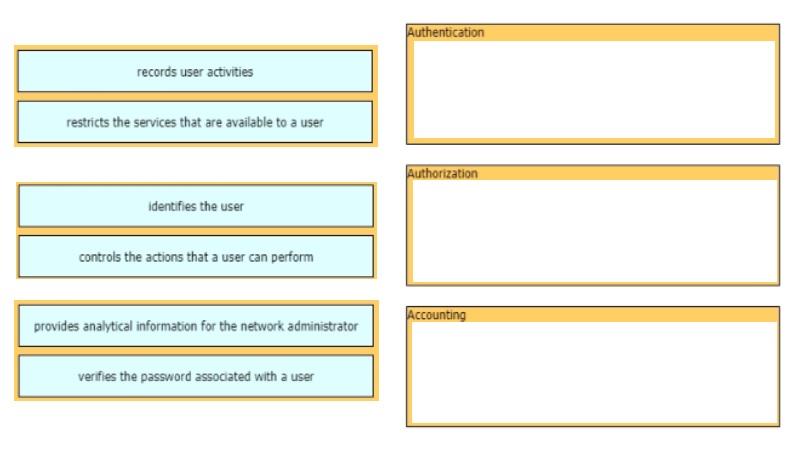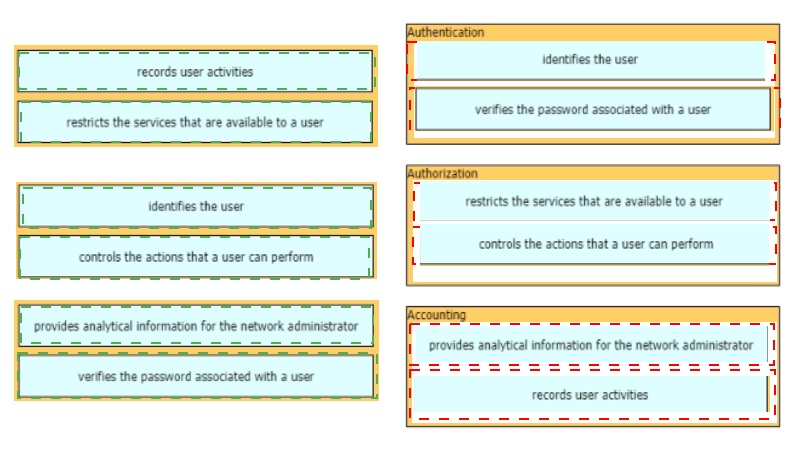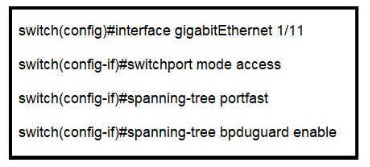
- Email support@dumps4free.com

Topic 1: Exam Pool A
desc about topic
A network administrator must enable DHCP services between two sites. What must be
configured for the router to pass DHCPDISCOVER messages on to the server?
A.
a DHCP Relay Agent
B.
DHCP Binding
C.
a DHCP Pool
D.
DHCP Snooping
a DHCP Relay Agent
Drag and drop the AAA functions from the left onto the correct AAA services on the right 

Which access layer threat-mitigation technique provides security based on identity?
A.
Dynamic ARP Inspection
B.
using a non-default native VLAN
C.
802.1x
D.
DHCP snooping
802.1x
Refer to the exhibit.
What is the result if Gig1/11 receives an STP BPDU?
A.
The port transitions to STP blocking
B.
The port transitions to the root port
C.
The port immediately transitions to STP forwarding.
D.
The port goes into error-disable state
The port goes into error-disable state
in Which way does a spine and-leaf architecture allow for scalability in a network when
additional access ports are required?
A.
A spine switch and a leaf switch can be added with redundant connections between them
B.
A spine switch can be added with at least 40 GB uplinks
C.
A leaf switch can be added with a single connection to a core spine switch.
D.
A leaf switch can be added with connections to every spine switch
A leaf switch can be added with connections to every spine switch
Explanation: Spine-leaf architecture is typically deployed as two layers: spines (such as
an aggregation layer), and leaves (such as an access layer). Spine-leaf topologies provide
high-bandwidth, low-latency, nonblocking server-to-server connectivity.
Leaf (aggregation) switches are what provide devices access to the fabric (the network of
spine and leaf switches) and are typically deployed at the top of the rack. Generally,
devices connect to the leaf switches.
Devices can include servers, Layer 4-7 services (firewalls and load balancers), and WAN
or Internet routers. Leaf switches do not connect to other leaf switches. In spine-and-leaf
architecture, every leaf should connect to every spine in a full mesh.
Spine (aggregation) switches are used to connect to all leaf switches and are typically
deployed at the end or middle of the row. Spine switches do not connect to other spine
switches.
| Page 16 out of 173 Pages |
| Previous |